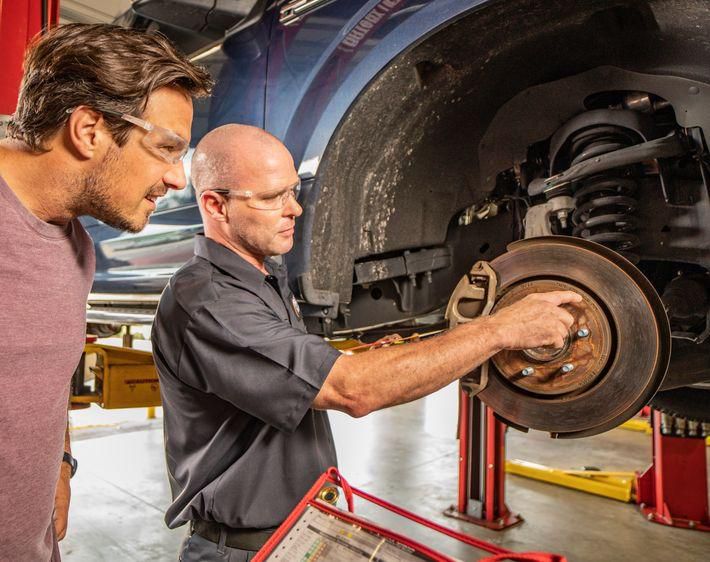Federal law requires all cars made after 2013 to be equipped with an anti-lock brake system, or ABS. Depending on when your car was manufactured, you might have spent the last few years driving with ABS without knowing what it is.
Here, we’re going to steer you toward information about what anti-lock brakes do, how ABS works, how ABS differs from non-ABS brakes, and what some common anti-lock brake problems are.
What do anti-lock brakes do?
ABS helps you steer your car in emergencies and slippery conditions by restoring traction to your tires. It does this by helping stop the wheels from locking up and skidding. And by preventing a skid, your ABS also helps prevent uneven tire wear.
If you rarely drive in snow or ice, you won’t know what to expect when ABS is activated. When ABS does kick in, it “vibrates and groans,” as the MyCarDoesWhat education campaign describes it. The vibration comes from the brakes pulsing numerous times per second.
ABS may help decrease stopping distances on slippery and dry roads, according to the National Highway Traffic Safety Administration (NHTSA). However, on soft surfaces like gravel or unpacked snow, ABS could actually increase stopping distances.
How does ABS work?
Wheel sensors recognize when your car’s tires begin locking up. Then, they quickly and repeatedly apply and release the brakes to automatically keep your tires from skidding.
Additionally, ABS automatically adjusts the brake fluid pressure in each wheel to maintain ideal brake performance—helping prevent them from locking up, says the NHTSA. An electronic control unit within the system regulates the brake fluid pressure in reaction to changing road conditions or an about-to-happen wheel lockup.
There are two types of ABS: four-wheel and rear-wheel-only. Many new cars and minivans come with four-wheel ABS, which is designed to assist with steering. Rear-wheel-only ABS, usually found in certain SUVs, pickup trucks, and vans, is meant to keep a vehicle from spinning out on the slick pavement rather than assisting with handling in slippery conditions.
How does ABS differ from non-ABS brakes?
In an emergency, four-wheel ABS can activate and pump the brakes faster than you typically would without it. On most paved road surfaces, ABS may stop a car more quickly than a vehicle without anti-lock brakes.
In a car equipped with ABS, your foot should remain firmly planted on the brake pedal, states the NHTSA. As you step on the brake, the ABS does the pumping for you so you can focus on steering.
Without ABS, rapid, hard braking could cause wheel lockup and loss of steering control. If you don't pump the brakes "just right" in terms of frequency and force, your likelihood of losing traction increases. ABS helps take the guesswork out of braking in slippery conditions.
What are some common problems with ABS?
ABS is meant to enhance vehicle safety, but such braking systems are not without problems of their own. Most vehicles with ABS have a dashboard light that will alert you when the pumping function activates or if there is an issue reducing your brakes' effectiveness. If your ABS signal (a dash light with the letters "ABS") lights up, here's a variety of factors that may be to blame:
- Improperly inflated tires
- Tires with worn-down tread
- Worn brake linings
- Air or dirt in the brake fluid
- Leaks that decrease braking impact
- Debris-contaminated brake sensors
Now that you know how ABS works, you might recognize some common anti-lock brake problems happening in your own car. Tires Plus offers free brake checks seven days a week. Visit your nearest Tires Plus location for an inspection and, if needed, brake repairs.



